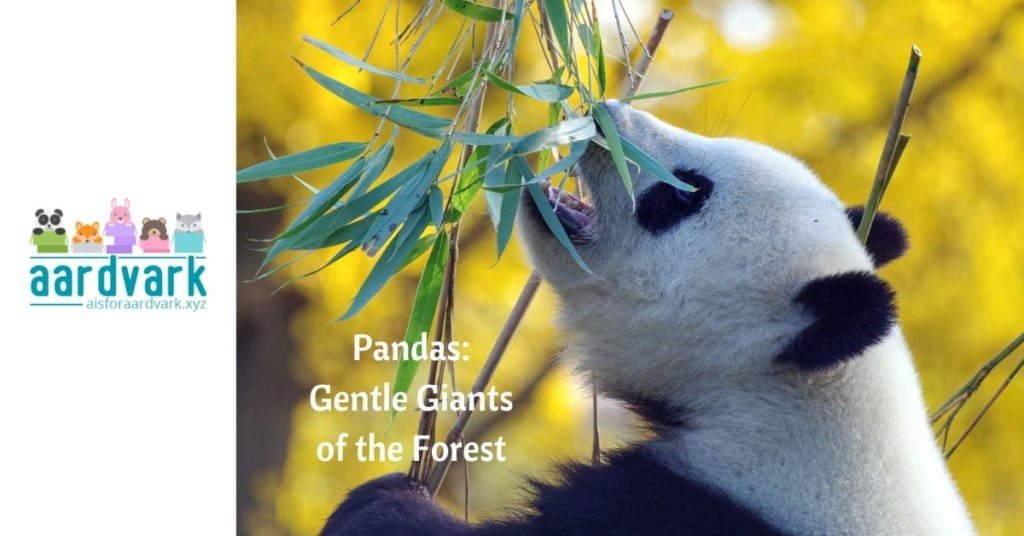Pandas, embodying tranquility and prosperity, are adored worldwide. Their distinct black and white fur and playful antics have made them more than just wildlife marvels; they are also cultural symbols.
Physical Description
Recognizable by their unique black-and-white coat, giant pandas (Ailuropoda melanoleuca) have adapted well to their cool forest habitat. They have thick fur to insulate them against the cold. Adult pandas typically weigh between 75 and 135 kilograms (165 to 297 pounds), with males usually being slightly larger than females.
They typically measure about 60 to 90 centimeters (24 to 35 inches) at the shoulder when on all fours. When standing on their hind legs, they can reach a height of about 1.5 meters (5 feet). In terms of body length, adult pandas grow up to 1.2 to 1.9 meters (4 to 6 feet) long, including their tail.
Pandas are characterized by a round face, large muzzle, and powerful jaw muscles, essential for crushing the tough bamboo that makes up most of their diet.
Habitat and Distribution
Pandas are indigenous to China, residing mainly in the mountainous regions of Sichuan, Shaanxi, and Gansu provinces. They inhabit cool, damp bamboo forests at altitudes ranging from 1,500 to 3,000 meters (4,900 to 9,800 feet). They once lived in broader areas, including lower elevations, but human encroachment and environmental changes have restricted their current habitat.
Diet and Feeding Habits
Pandas primarily consume bamboo, which accounts for over 99% of their diet. They eat several bamboo species, consuming up to 12-38 kilograms (26-84 pounds) of bamboo shoots daily. Their modified wrist bone, acting like a thumb, aids in grasping bamboo stalks.
However, pandas descend from carnivores and still feature many physical features related to eating meat. But over thousands of years, they’ve developed the ability to survive with bamboo as their primary source of nutrition.
Reproduction and Lifespan
Pandas are known for their low reproductive rate, a significant factor in their vulnerable status. Females are fertile for just a few days each year in spring. After around 135 days of pregnancy, a female panda might give birth to one or two cubs, typically with only one surviving. Panda cubs are born blind and extremely small. Wild pandas live about 14 to 20 years. Those in captivity can live up to 30 years.
Social Structure
Pandas are solitary animals, with males and females meeting only during mating season. They communicate via sounds and scent marking. Due to their low-energy diet, pandas spend most of their time feeding and resting.
Cultural Significance and Conservation
In Chinese culture, the panda symbolizes peace and amiability.
Its image as the WWF’s logo since 1961 highlights its role in wildlife conservation. Known for “Panda Diplomacy,” pandas are global symbols of environmental conservation and diplomatic goodwill. China has gifted pandas to foreign zoos – either on loan or permanently – as signs of cooperation and collaboration.
The giant panda has moved from ‘Endangered’ to ‘Vulnerable’ thanks to effective conservation measures like habitat preservation and captive breeding. However, habitat fragmentation and climate change pose ongoing threats.
Pandas in Pop Culture
Pandas are often featured in media and art as representatives of conservation efforts for endangered species. They also appear in movies, cartoons, and as mascots. Po – the Kung-Fu Panda – is just one example of their fame.
These marvelous creatures charm people globally with their striking appearance and gentle nature. Their survival depends on ongoing conservation efforts, underlining their role as a symbol of environmental preservation and a reminder of our ecosystems’ fragility. Protecting these magnificent creatures exemplifies the potential of dedicated conservation work.


